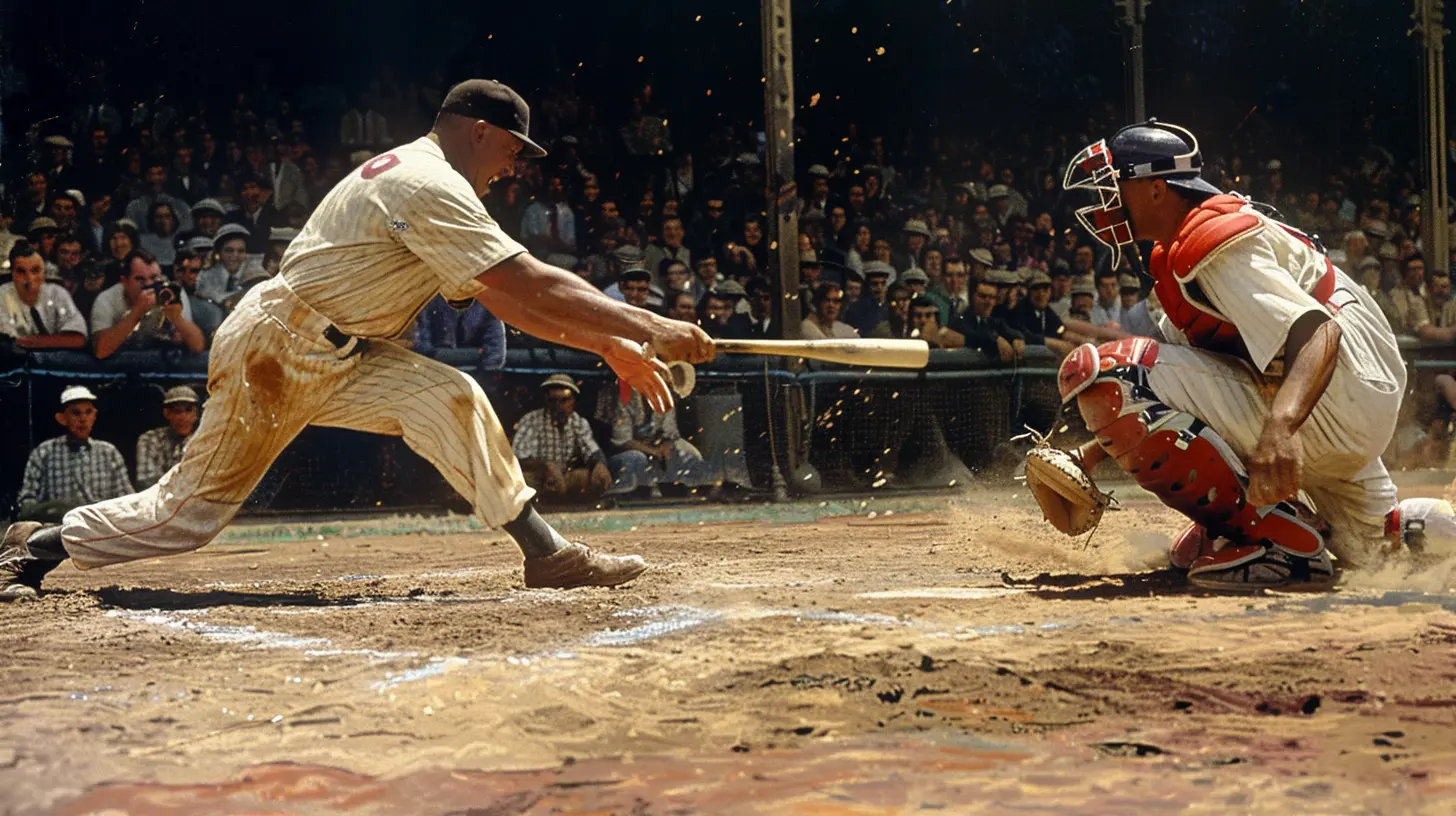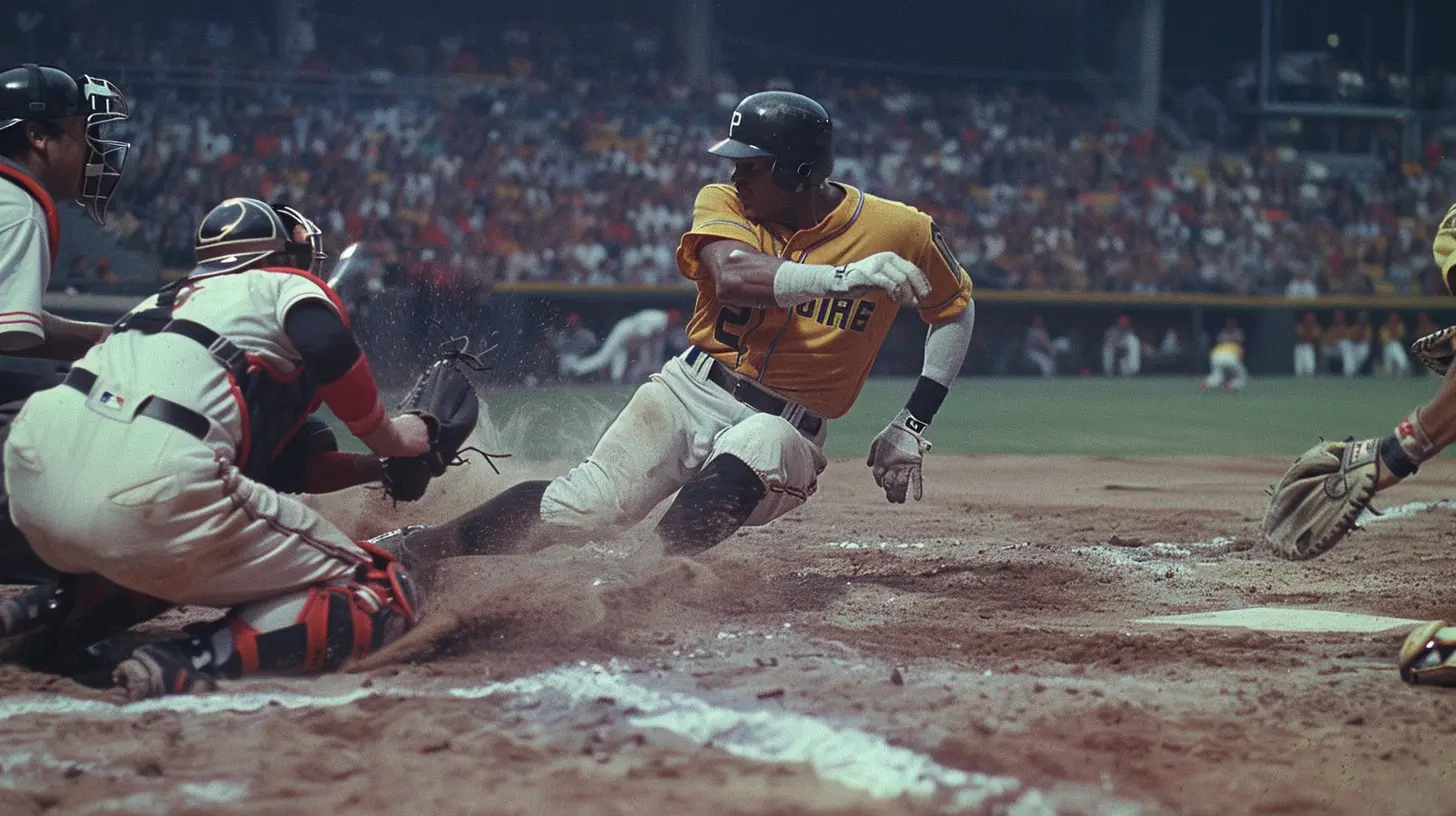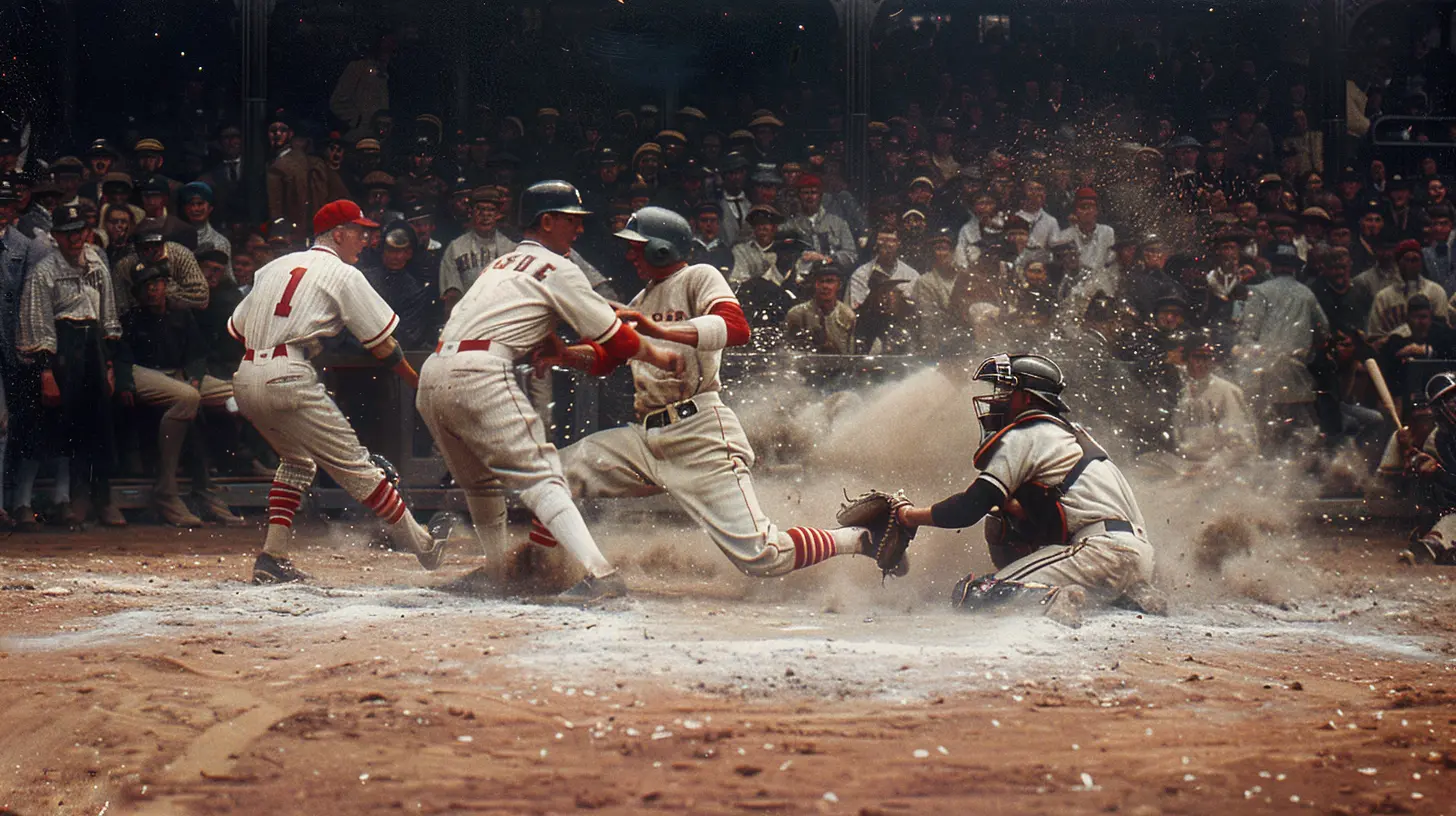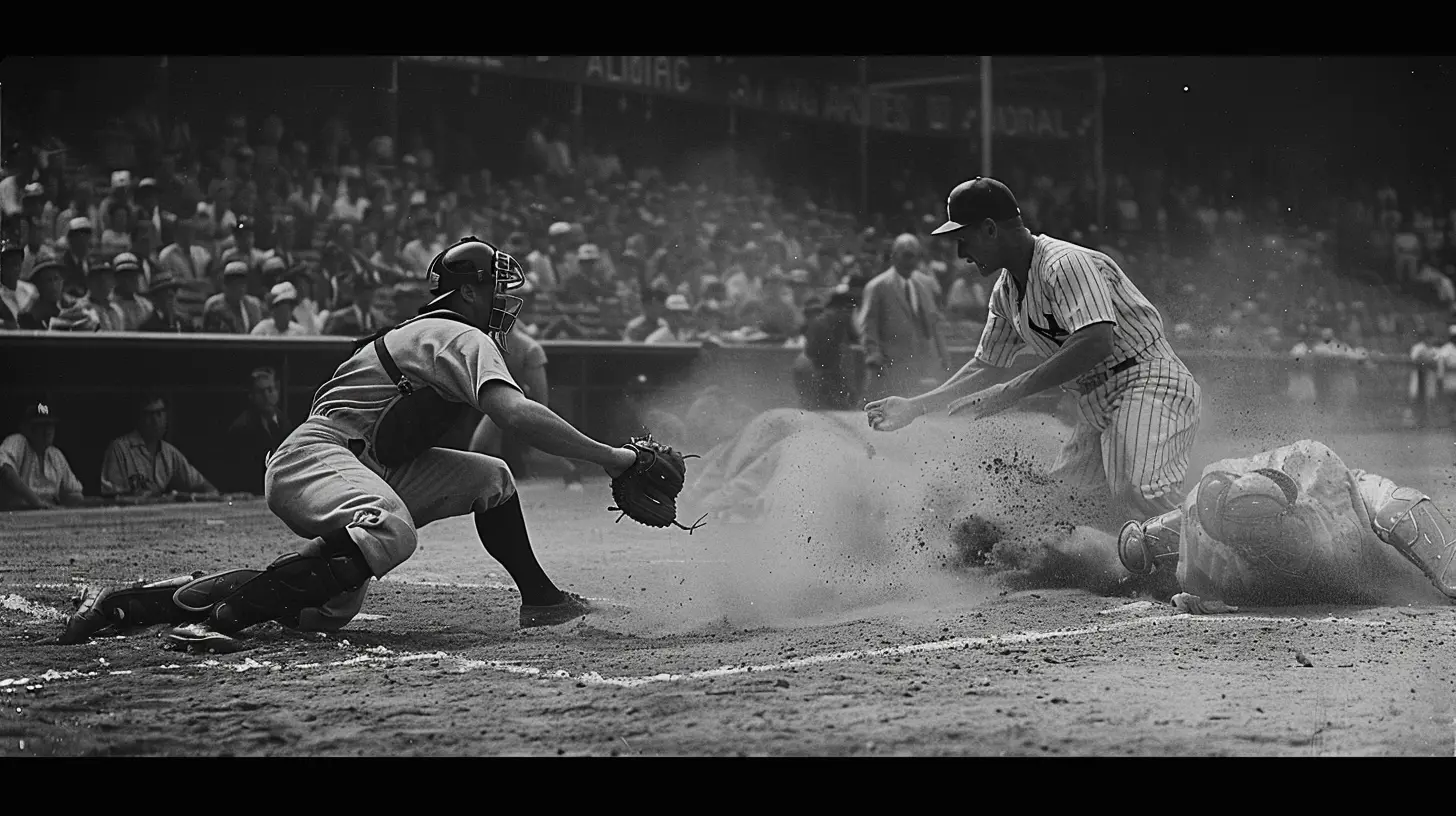The Most Controversial Calls in Baseball History
29 May 2025
Baseball, often called "America's pastime," is a sport rich in tradition, history, and, let’s be honest, drama. And while the game itself is thrilling, there are moments that transcend the sport—moments when a single decision can change the course of history. Umpires, the unsung heroes of the game, are tasked with making lightning-quick decisions that can either make or break a team's dreams. But what happens when they get it wrong?
Some calls in baseball are so controversial that they’re still talked about decades later. From blown perfect games to World Series-altering decisions, these moments have left fans, players, and even umpires shaking their heads in disbelief. In this article, we'll dive into some of the most controversial calls in baseball history. Buckle up because this ride is about as bumpy as a bad infield hop.

1. Jim Joyce’s Blown Perfect Game Call – 2010
Let’s start with a call that still stings for baseball fans, particularly those in Detroit. Picture this: Armando Galarraga of the Detroit Tigers is pitching the game of his life. It’s the ninth inning, two outs, and he’s just one out away from completing a perfect game (which, for the uninitiated, means no opposing player reaches base). It’s a baseball unicorn; something so rare that when it’s within reach, everyone is on the edge of their seat.Then, Cleveland Indians' Jason Donald hits a ground ball to first base. Galarraga covers the bag and catches the throw. Out, right? Wrong. Umpire Jim Joyce calls Donald safe. The stadium erupts, Galarraga smiles in disbelief, and the perfect game is gone.
Joyce, to his credit, admitted post-game that he blew the call. "I just cost that kid a perfect game," he said with tears in his eyes. Galarraga, showing class beyond his years, simply said, “Nobody’s perfect.” But for Tigers fans, that call will forever haunt them.
Why It’s Controversial
Not only was this a perfect game, but the play was clearly an out. Replays showed Donald was out by a full step. In the post-replay era, this mistake would have been corrected instantly, but back in 2010, there was no such luxury. That missed call cost Galarraga a place in the record books.
2. Don Denkinger’s World Series Blunder – 1985
If you want to talk about a call that changed the course of a World Series, look no further than Game 6 of the 1985 Series between the St. Louis Cardinals and the Kansas City Royals.The Cardinals were leading the Series 3-2 and were one win away from taking home the championship. In the bottom of the ninth inning, with the Royals trailing 1-0, Jorge Orta hit a slow roller to first base. Cardinals first baseman Jack Clark fielded the ball and tossed it to pitcher Todd Worrell, who was covering the bag.
It looked like Orta was out. But umpire Don Denkinger called him safe. The Royals went on to score two runs in the inning and won Game 6. They then dominated Game 7 to take the World Series.
Why It’s Controversial
Much like Jim Joyce’s call, replays showed that Orta was clearly out. This single call shifted the momentum of the World Series, and Cardinals fans will tell you to this day that Denkinger cost them the championship.
3. The Jeffrey Maier Incident – 1996 ALCS
Ah, Jeffrey Maier—the name that still haunts Baltimore Orioles fans. In Game 1 of the 1996 American League Championship Series (ALCS) between the Orioles and the New York Yankees, 12-year-old Jeffrey Maier became an unwitting participant in one of baseball’s most notorious moments.In the bottom of the eighth inning, with the Yankees trailing 4-3, Derek Jeter hit a deep fly ball to right field. Orioles outfielder Tony Tarasco positioned himself under the ball, ready to make the catch. But just as the ball was about to drop into his glove, young Maier reached over the fence and deflected it into the stands.
Umpire Rich Garcia ruled it a home run, tying the game. The Yankees went on to win in extra innings and took the series in five games.
Why It’s Controversial
Replays clearly showed that Maier interfered with the ball, and it should have been ruled fan interference. Instead, Garcia’s blown call gave Jeter a home run and the Yankees a lifeline. Orioles fans still grumble about that call, and for good reason—it dramatically shifted the series' outcome.
4. Eric Gregg’s Strike Zone – 1997 NLCS
Umpires are human, and their strike zones can vary from game to game. But in Game 5 of the 1997 National League Championship Series (NLCS) between the Atlanta Braves and the Florida Marlins, Eric Gregg’s strike zone was, well, something else.In that game, Marlins pitcher Livan Hernandez struck out 15 Braves hitters, many of them on pitches that were, let’s be honest, nowhere near the strike zone. Gregg’s strike zone expanded to the point where pitches several inches off the plate were being called strikes. The Braves were furious, but there was nothing they could do.
The Marlins went on to win the game and eventually the World Series.
Why It’s Controversial
While it wasn’t a single blown call, Gregg’s strike zone was so inconsistent that it changed the way the game was played. Braves hitters had to swing at pitches that were clearly balls, and it felt like the game was being taken out of the players' hands. To this day, it’s one of the most infamous examples of an umpire’s strike zone impacting a game’s outcome.5. The Infield Fly Rule Controversy – 2012 NL Wild Card Game
The 2012 NL Wild Card game between the Atlanta Braves and the St. Louis Cardinals will forever be remembered for one thing: a controversial infield fly rule call that left Braves fans livid.In the eighth inning, with runners on first and second, Braves batter Andrelton Simmons hit a pop-up to shallow left field. Cardinals shortstop Pete Kozma drifted back, but at the last second, he abandoned the ball, letting it fall untouched. Umpire Sam Holbrook called the infield fly rule, ruling Simmons out.
The Braves protested, arguing that the ball was too deep to be considered an infield fly. The call stood, and the Cardinals went on to win the game.
Why It’s Controversial
The infield fly rule is meant to prevent fielders from intentionally letting a pop-up drop to turn a double play. However, this ball was hit so deep into the outfield that it didn’t seem like it should apply. The Braves argued that the call was made too late, and the fans were so upset that they threw debris onto the field, causing a lengthy delay.
6. The Pine Tar Incident – 1983
No list of controversial calls would be complete without mentioning the infamous Pine Tar Game. This bizarre incident occurred during a game between the Kansas City Royals and the New York Yankees in 1983.In the top of the ninth inning, Royals slugger George Brett hit a go-ahead two-run home run off Yankees closer Goose Gossage. But Yankees manager Billy Martin noticed that Brett’s bat had an excessive amount of pine tar on it, more than the 18 inches allowed by MLB rules. The umpires measured the bat and ruled Brett out, nullifying the home run.
Brett famously stormed out of the dugout in a fit of rage, and the game seemed to be over. However, the Royals protested, and the American League president later overturned the decision, ruling that the home run should stand. The game was resumed weeks later, with the Royals winning.
Why It’s Controversial
While Brett’s bat did violate the rule, the spirit of the rule was to prevent players from gaining an unfair advantage, which Brett clearly wasn’t doing. The umpires’ strict interpretation of the rule led to one of the most memorable moments in baseball history.7. The Catcher’s Interference Call – 1975 World Series
The 1975 World Series between the Boston Red Sox and the Cincinnati Reds is often regarded as one of the greatest series of all time. But Game 3 featured a controversial call that nearly overshadowed the action on the field.In the tenth inning, Reds batter Ed Armbrister laid down a bunt in front of the plate. Red Sox catcher Carlton Fisk attempted to field the ball, but Armbrister collided with him, preventing Fisk from making a play. Fisk argued that it was interference, but home plate umpire Larry Barnett ruled that it was incidental contact, allowing the play to stand.
The Reds went on to win the game and eventually the World Series in seven games.
Why It’s Controversial
Many felt that Armbrister’s interference was blatant and that Fisk should have been awarded the out. The ruling not only cost the Red Sox the game but also added to the team’s infamous World Series drought.
Conclusion
Baseball is a game of inches, and sometimes those inches are decided by the human element—umpires. While most calls go unnoticed, these controversial decisions have left an indelible mark on the sport’s history. Whether it’s a blown perfect game, a World Series-altering decision, or a kid reaching over the fence, these moments remind us that, for better or worse, baseball is as unpredictable as it is thrilling.all images in this post were generated using AI tools
Category:
BaseballAuthor:

Frankie Bailey
Discussion
rate this article
3 comments
Taryn Wilkerson
This article highlights pivotal moments that shaped the game, reminding us how human error and interpretation can influence sports history.
June 1, 2025 at 4:45 AM

Frankie Bailey
Thank you! It’s fascinating how these moments reveal the impact of human judgment on the game.
Georgina Forbes
Baseball’s like a family dinner—everyone thinks they’re the expert. Just remember, when in doubt, blame the ump and pass the mashed potatoes!
May 31, 2025 at 10:54 AM

Frankie Bailey
Great analogy! In baseball, just like at the dinner table, everyone has their opinions, but it's the umpires who ultimately make the calls—no matter how controversial they may be!
Katherine McIlwain
Great article! The drama of controversial calls really adds to the intrigue of baseball. It's fascinating how these pivotal moments shape the game and fan memories. Can't wait to read more!
May 30, 2025 at 2:34 AM

Frankie Bailey
Thank you! I'm glad you enjoyed it. The drama of those calls truly does make the game unforgettable. Stay tuned for more!



